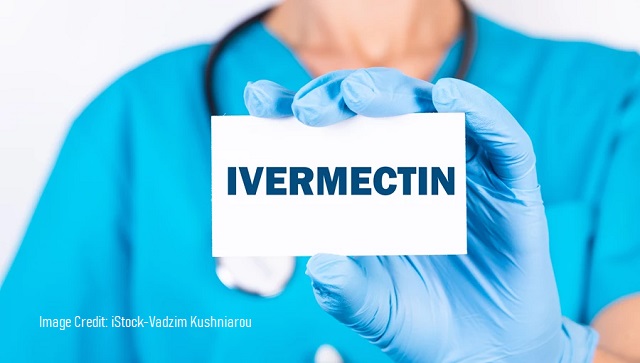7 Ways the FDA Decision to Sell Birth Control Pills Over-the-Counter Hurts Women

The Biden administration approved the first over-the-counter birth control pill — a drug associated with mental and physical harms including higher rates of breast cancer, depression, and life-threatening ectopic pregnancies.
On Thursday, Biden’s Food and Drug Administration (FDA) authorized the sale of Opill (norgestrel) without requiring a physical examination or prescription. Opill is a low-dose minipill also known as a progestin-only pill (or POP), unlike the standard birth control pill which combines estrogen and progestin (E+P).
The FDA press release trumpeting the decision listed “[t]he most common side effects of Opill” as “irregular bleeding, headaches, dizziness, nausea, increased appetite, abdominal pain, cramps or bloating.” But the progestin-only pill contributes to significantly worse side effects which the Biden administration left unmentioned.
1. Cancer. Hormonal contraception of all kinds increases the risk of certain forms of cancer. But studies show taking the progestin-only birth control pill specifically raises the odds of breast cancer, the most common cancer among women aside from skin cancers. In March, researchers at Oxford University found “a relative increase of around 20% to 30% in breast cancer risk associated with current or recent use of either combined oral or progestin-only contraceptives.” Even Biden’s celebratory press release noted, “Opill should not be used by those who have or have ever had breast cancer.”
The threat is not restricted to breast cancer. Progestin-only birth control also raises the risk of developing cancer of the glands (adenocarcinoma) or of the skin (squamous cancer), European researchers found in 2021. The same year, the Department of Health and Human Services (HHS) listed progesterone among substances that “are known or reasonably anticipated to cause cancer in humans.”
Progestin-only minipills may also cause women to suffer from cancer longer, with greater complications, by camouflaging cancerous cells from the body’s defense systems. “[P]rogesterone helps the tumor cells go unnoticed,” said Christy Hagan, PhD, assistant professor at the Cancer Center of the University of Kansas. “If breast tumor cells circulating in our body are exposed to progesterone, the hormone may conceal the tumor’s danger signals that are normally recognized by the immune system.”
The danger rises if progestin is combined with estrogen. The standard birth control pill (E+P) is a Group 1 carcinogen. The National Cancer Institute admits that “studies have provided consistent evidence that the risks of breast and cervical cancers are increased in women who use oral contraceptives.” Standard contraceptives also increase the chance of cervical cancer, with the risk rising progressively the longer a woman takes it: 10% higher for women who took the pill less than five years, 60% increased risk after 5–9 years of use, and doubling the risk after taking the pill 10 or more years.
Women maintain a higher likelihood of developing cancer for 10 years after they stop taking birth control pills.
2. Depression. Every birth control pill makes women more likely to become clinically depressed, but the progestin-only minipill seems to have the worst impact on women’s mental health. “All forms of hormonal contraception were associated with an increased risk of developing depression, with higher risks associated with the progesterone-only forms,” concluded Dr. Monique Tello of Harvard Medical School. (Emphasis added.)
Dr. Tello found one out of every 200 women who takes hormonal contraception of any kind will develop depression. At least nine million American women aged 15-49 use birth control pills, according to the CDC. That means 45,450 U.S. women will develop depression due exclusively to their contraceptive choice.
Foreign researchers have confirmed the link between POPs and negative mental health. A Danish study found women who took the minipill were 30% more likely to be prescribed antidepressants for the first time, and teenage “users of progestin-only pills experienced a 2.2-fold higher rate” than adolescents (15-19) who never used hormonal birth control. A Swedish study found those who ingested progestin-only pills were most likely to be prescribed antidepressants, especially among teens aged 16-19.
Progestin-only pills can amplify negative conditions and incarnate emotional pain in the rest of the body. Under stress, progesterone increases levels of the stress hormone cortisol; high cortisol levels lead to greater weight gain and fat retention, diabetes, high blood pressure, and osteoporosis. Progesterone levels are “likely causal factors for the mood symptoms experienced by women with premenstrual syndrome (PMS) and premenstrual dysphoric disorder (PMDD),” a team of researchers from Sweden and New Zealand found in 2020.
“A recent review has shown that sex hormones have significant impact on brain areas related to emotional and cognitive functioning,” wrote two researchers at Monash University in Melbourne, Australia. “Progesterones have been shown to induce depression, particularly in vulnerable women.” How do women know if they are “vulnerable”? A physician’s appointment could screen women’s hormonal state. Yet doctors sometimes fail to inform women of potentially mood-altering side effects.
“Hormonal birth control is a lie sold to women,” wrote Chrissy Clark of the Daily Caller. “For 15 years I was on the pill & had inexplicable anxiety and depression[,] symptoms my doctors NEVER thought to tell me were the result of hormonal birth control. I’m over 1 year off hormonal birth control now. My skin is clearer, my anxiety is gone, & my depression is non-existent.”
“Ladies, you deserve freedom from these side effects. Get. Off. The. Pill.”
3. Ectopic Pregnancy. Women who get pregnant while taking progestin-only pills such as the Opill have a greater risk of experiencing a life-threatening ectopic pregnancy, in which the newly conceived child implants in one of the fallopian tubes instead of the uterus. If undetected, the fallopian tube can rupture, causing serious side effects and even death. “If you get pregnant while taking the minipill, there appears to be a slightly higher chance” of an ectopic pregnancy, notes the Mayo Clinic. WebMD puts it bluntly: “If you get pregnant while taking the minipill, it can cause problems. You’re more likely to have an ectopic pregnancy.”
4. Potential Abortifacient. While they frequently block ovulation, all forms of hormonal birth control have the potential to induce an early abortion by preventing implantation — including the Opill the Biden administration has authorized for sale over-the-counter. “Progestin-only pills don’t prevent ovulation as well as combination birth control pills. Therefore, its effectiveness is slightly lower,” according to the Cleveland Clinic. Instead, the minipill “thickens cervical mucus and thins the lining of the uterus,” notes the Mayo Clinic. “These prevent sperm from reaching the egg and a fertilized egg from implanting in the womb.”
A “fertilized egg” is a dehumanizing term for a newly conceived child.
5. Blood Clots, Heart Attacks, and Strokes. The Mayo Clinic notes that high doses of progestin “sometimes cause some unwanted effects such as blood clots, heart attacks, and strokes, or problems of the liver and eyes,” which “can be very serious and cause death.” While low-dose progestin-only pills are not known to increase blood clots by themselves, selling the pill over-the-counter denies women a medical screening that might detect if they already have elevated levels of progestin, or other factors that put them at high-risk for serious complications.
The standard birth control pill (E+P) makes women two to 10 times as likely to develop blood clots, which can lead to such life-threatening conditions as pulmonary embolism, deep-vein thrombosis (DVT), and increased risk for stroke. The Cleveland Clinic estimates “10 in 10,000 people per year develop [blood] clots as a result of being on birth control.” That means as many as 909 of the nine million American women who take the birth control pill will suffer blood clots attributable exclusively to contraception. Dr. Lynn Keegan found 300-400 women die every year from the side effects of all forms of hormonal contraception.
Considering the wave of seemingly inexplicable hospitalizations and deaths among young people of bothsexes over the last few years, for variousreasons, Americans should be concerned OTC birth control compounds the damage of other Biden policies that benefit Big Pharma.
6. Diabetes. Links between POPs and diabetes seem to be slight and remain under review. Still, researchers in Chile discovered “progesterone accelerates the progression of diabetes” in mice. Korean researchers found progesterone increases blood glucose levels under certain circumstances in 2021, and Chinese epidemiologists found higher levels of progesterone associated with prediabetes in 2019. Specific circumstances multiply progestin’s potential blood glucose impact. “[T]he use of a progestin-only [oral contraception] during breast-feeding was associated with a nearly 3-fold increase in the incidence of diabetes” among women who had previously had gestational diabetes, Japanese researchers discovered.
7. Religious Liberty. Selling birth control over the counter is likely to become a flashpoint in the ongoing battle to preserve religious liberty from encroachments by the Biden-Harris administration. The Biden administration issued an HHS guidance last July, warning pharmacies it will impose stiff, legal “corrective action” on pharmacists who refuse to hand out the abortion pill mifepristone and instruct customers “how to take” it. Liberal politicians and global governance bodies have long argued sexual “rights” should trump religious liberty. The United Nations Population Fund (UNFPA) called on governments to actively counteract “religious” objections to so-called “emergency contraception” in its 2012 annual report, which declared, “Family planning is a human right. It must therefore be available to all who want it.” The Lancet and the Los Angeles Times have even suggested nuns should take the birth control pill to reduce their risk of certain cancers.
Religious liberty is the first liberty enshrined in the Constitution. Religious rights are human rights. And since most church-goers are women, it’s fair to say, “Religious rights are women’s rights.”
AUTHOR
Ben Johnson
Ben Johnson is senior reporter and editor at The Washington Stand.
EDITORS NOTE: This Washington Stand column is republished with permission. All rights reserved. ©2023 Family Research Council.
The Washington Stand is Family Research Council’s outlet for news and commentary from a biblical worldview. The Washington Stand is based in Washington, D.C. and is published by FRC, whose mission is to advance faith, family, and freedom in public policy and the culture from a biblical worldview. We invite you to stand with us by partnering with FRC.














